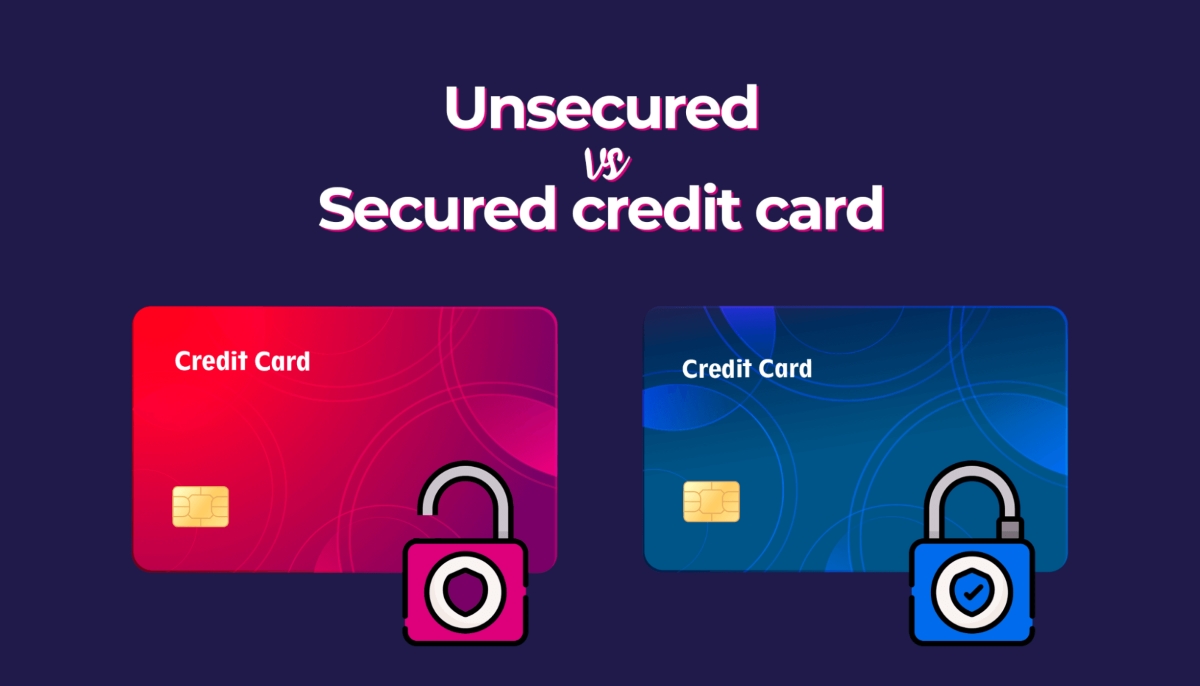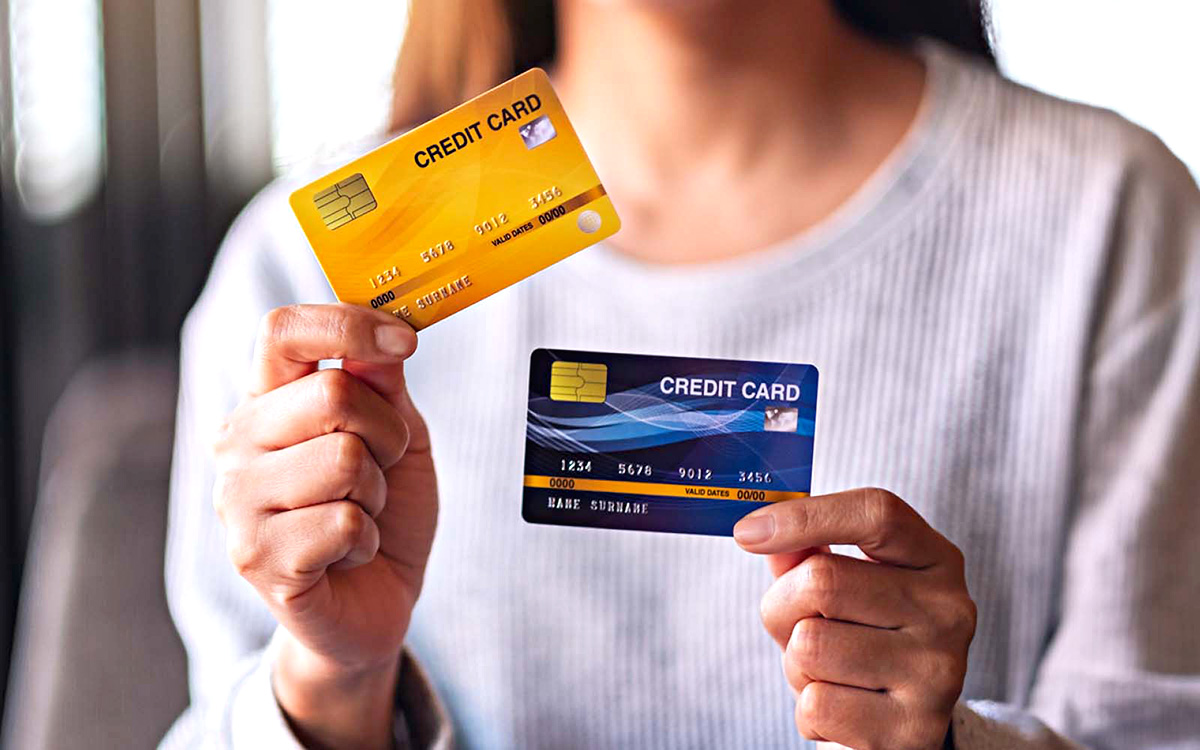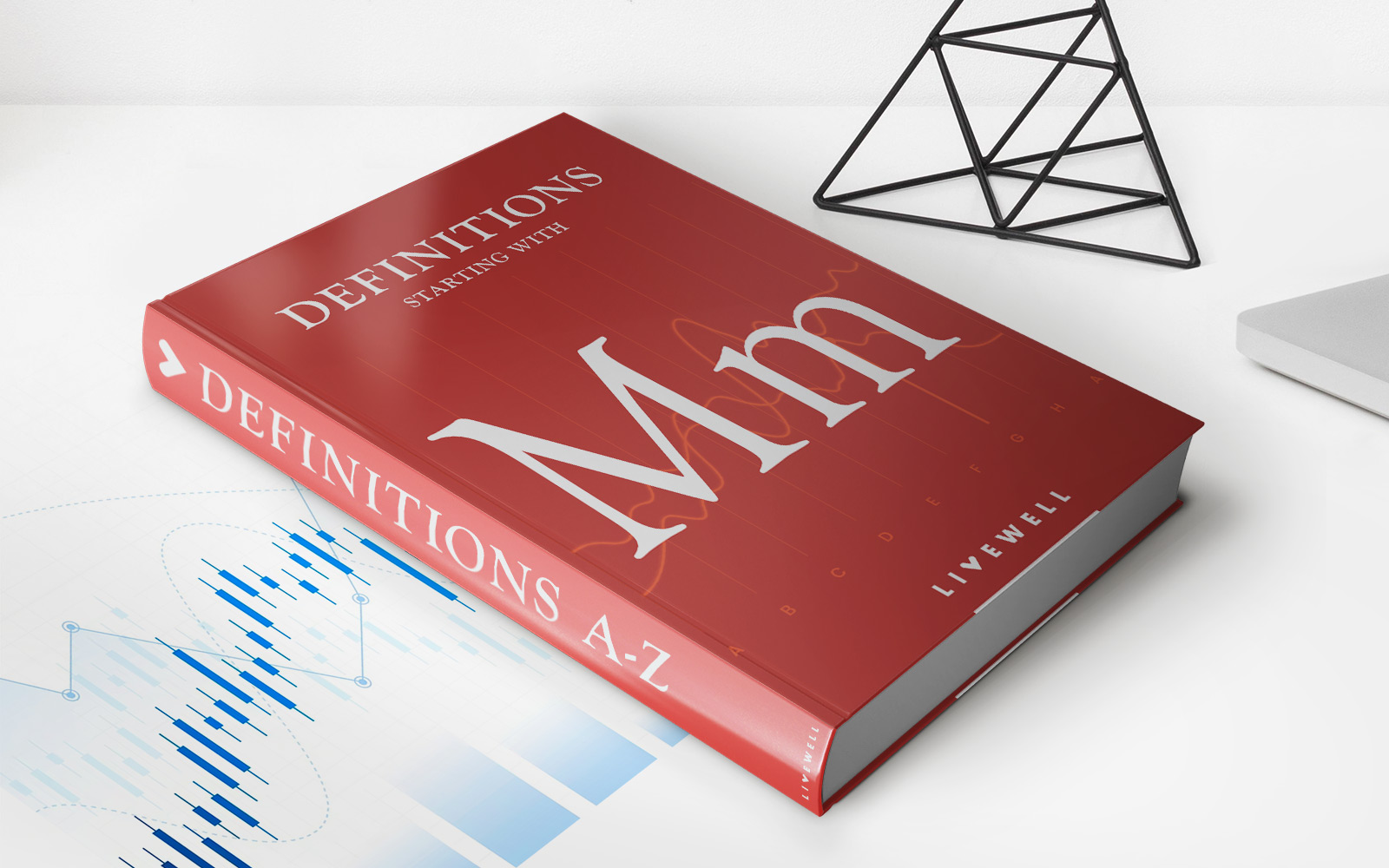Home>Finance>How Long Before A Secured Card Becomes Unsecured?


Finance
How Long Before A Secured Card Becomes Unsecured?
Published: March 1, 2024
Learn about the timeline for a secured credit card to become unsecured and how it impacts your finances. Find out more about secured card transitions.
(Many of the links in this article redirect to a specific reviewed product. Your purchase of these products through affiliate links helps to generate commission for LiveWell, at no extra cost. Learn more)
Table of Contents
- Understanding the Transition from Secured to Unsecured Credit Cards
- Demystifying the Concept of Secured Credit Cards
- Navigating the Transition from Secured to Unsecured Credit
- Understanding the Determinants of Secured to Unsecured Card Conversion
- Unlocking Opportunities and Advantages of Unsecured Credit
- Elevating Financial Horizons through Secured to Unsecured Credit Progression
Introduction
Understanding the Transition from Secured to Unsecured Credit Cards
Secured credit cards serve as a valuable financial tool for individuals looking to build or rebuild their credit history. These cards require a cash deposit as collateral, which often determines the card's credit limit. As responsible spending and on-time payments are reported to credit bureaus, cardholders can gradually improve their credit score. However, a common question that arises among secured card users is, "How long before a secured card becomes unsecured?"
This transition from a secured to an unsecured credit card represents a significant milestone for cardholders. It signifies that the card issuer has recognized the individual's improved creditworthiness and is willing to extend an unsecured line of credit. Understanding the process and factors involved in this transition is crucial for those seeking to elevate their financial standing and access more favorable credit options. In this article, we will delve into the intricacies of secured and unsecured cards, explore the journey from secured to unsecured status, and highlight the benefits of achieving unsecured credit card status.
What is a Secured Card?
Demystifying the Concept of Secured Credit Cards
A secured credit card is a financial instrument designed to assist individuals with limited or damaged credit history in establishing or rebuilding their credit. Unlike traditional unsecured credit cards, secured cards require the cardholder to provide a cash deposit as collateral, typically equal to the credit limit of the card. This deposit mitigates the risk for the card issuer, as it serves as a guarantee against potential defaults. It also offers a level of assurance to the cardholder, enabling them to use the card while working to improve their creditworthiness.
Secured cards function similarly to traditional credit cards, allowing users to make purchases, build a payment history, and demonstrate responsible credit utilization. The key distinction lies in the collateral requirement, which provides a layer of security for the card issuer. This feature makes secured cards an accessible option for individuals who may not qualify for unsecured credit cards due to limited credit history, past financial challenges, or other factors that impact their creditworthiness.
Moreover, secured credit cards are often viewed as a stepping stone toward accessing unsecured credit. As cardholders demonstrate consistent, responsible credit management, they pave the way for potential advancement to unsecured card status, where the need for collateral is eliminated. Understanding the fundamental principles of secured credit cards and their role in the credit-building journey is essential for individuals seeking to strengthen their financial foundation and expand their credit options.
How Does a Secured Card Become Unsecured?
Navigating the Transition from Secured to Unsecured Credit
The transformation from a secured credit card to an unsecured one is an achievement that reflects a cardholder’s financial progress and creditworthiness. This transition typically occurs through a deliberate and systematic process, influenced by various factors that signal the card issuer’s confidence in the individual’s ability to manage credit responsibly. While the specific timeline for this transition may vary among card issuers and individual circumstances, several common pathways and considerations can shed light on the journey from secured to unsecured credit status.
One of the primary mechanisms through which a secured card becomes unsecured is the consistent demonstration of responsible credit behavior. This encompasses factors such as making timely payments, maintaining a low credit utilization ratio, and managing the card account prudently. As cardholders exhibit these positive financial habits over an extended period, they convey a strong credit management track record, which can prompt the card issuer to consider transitioning the card to an unsecured status.
Furthermore, some card issuers proactively review secured card accounts to assess the cardholder’s credit progress. Upon observing substantial improvements in credit management and financial stability, the issuer may initiate the conversion process, offering the cardholder an unsecured credit card without the collateral requirement. This proactive evaluation underscores the significance of consistently showcasing responsible credit behavior and financial discipline to facilitate the transition to unsecured credit.
It is important to note that the specific criteria and procedures for transitioning from a secured to an unsecured card may vary across different card issuers. Some issuers may require the cardholder to request a review for potential conversion, while others may conduct periodic assessments to identify eligible candidates for unsecured credit offers. Understanding the policies and guidelines of the respective card issuer can provide valuable insights into the process of achieving unsecured credit status.
Ultimately, the journey from a secured to an unsecured credit card signifies a pivotal milestone in an individual’s credit-building endeavors. By consistently demonstrating responsible financial habits and maintaining a positive credit trajectory, cardholders can position themselves for the potential advancement to unsecured credit, unlocking new opportunities for accessing credit and enhancing their financial well-being.
Factors That Influence the Transition
Understanding the Determinants of Secured to Unsecured Card Conversion
The transition from a secured credit card to an unsecured one is influenced by a myriad of factors that collectively reflect a cardholder’s creditworthiness and financial stability. While the specific criteria for this transition may vary among card issuers, understanding the common determinants can offer valuable insights into the process and requirements for achieving unsecured credit status.
- Payment History: The payment history plays a pivotal role in influencing the transition from secured to unsecured credit. Consistently making on-time payments and fulfilling the minimum payment obligations demonstrates responsible credit management and contributes to a positive credit profile. Card issuers often assess the cardholder’s payment history to gauge their reliability and commitment to meeting financial obligations.
- Credit Utilization Ratio: The utilization of available credit also holds significant sway in the transition process. Maintaining a low credit utilization ratio, which reflects the proportion of available credit being utilized, showcases prudent credit usage and financial discipline. Card issuers typically favor individuals who demonstrate responsible utilization of their credit limits, as it signifies an ability to manage credit responsibly.
- Account Management: The overall management of the secured card account, including prudent spending, regular monitoring, and adherence to the card’s terms and conditions, can impact the transition to unsecured credit. Responsible account management reflects a cardholder’s commitment to maintaining a positive credit standing and can influence the issuer’s decision regarding the conversion to an unsecured card.
- Credit History Improvement: Demonstrating tangible improvements in one’s credit history, such as the resolution of past delinquencies, reduction of outstanding debts, and the establishment of a positive credit trajectory, can bolster the case for transitioning to unsecured credit. Card issuers often evaluate the overall credit improvement and financial progress of the cardholder when considering the conversion to an unsecured card.
- Issuer Policies and Reviews: The specific policies and review processes implemented by the card issuer play a crucial role in determining the transition from secured to unsecured credit. Some issuers conduct periodic assessments of secured card accounts to identify eligible candidates for unsecured credit offers, while others may require the cardholder to request a review for potential conversion. Understanding the issuer’s guidelines and review mechanisms is essential for navigating the transition process.
These factors collectively contribute to the card issuer’s assessment of an individual’s creditworthiness and financial responsibility, shaping the decision to extend an unsecured line of credit. By prioritizing responsible credit management, maintaining a positive credit trajectory, and adhering to the issuer’s guidelines, cardholders can enhance their prospects of transitioning from a secured to an unsecured credit card, unlocking new opportunities for financial growth and flexibility.
Benefits of an Unsecured Card
Unlocking Opportunities and Advantages of Unsecured Credit
Transitioning from a secured credit card to an unsecured one offers a host of benefits and opportunities for cardholders, signifying a significant milestone in their credit-building journey. Unsecured credit cards, which do not require a cash deposit as collateral, provide enhanced financial flexibility and access to a wider range of credit options, empowering individuals to navigate their financial lives with greater ease and convenience.
- Expanded Credit Limit: Unsecured credit cards often offer higher credit limits compared to their secured counterparts, providing cardholders with increased purchasing power and the ability to manage larger expenses. This expanded credit limit can accommodate diverse financial needs and contribute to improved financial management.
- Collateral-Free Access: Unlike secured cards that necessitate a cash deposit as collateral, unsecured credit cards offer cardholders the freedom to access credit without tying up funds in a deposit. This collateral-free access underscores the trust and confidence extended by the card issuer, allowing individuals to utilize credit for various purposes without the burden of collateral requirements.
- Rewards and Benefits: Many unsecured credit cards feature rewards programs, cash back incentives, and other benefits that cater to cardholder preferences and spending habits. These rewards can encompass travel perks, cash rebates, loyalty points, and other valuable incentives, adding an extra layer of value to the credit card experience.
- Improved Credit Opportunities: Achieving unsecured credit status opens doors to a broader array of credit opportunities, including access to premium credit cards, loans, and other financial products that may be contingent on having an unsecured credit history. This expanded access can facilitate the pursuit of larger financial goals and enable individuals to leverage credit for various endeavors.
- Enhanced Financial Standing: Unsecured credit cards contribute to an individual’s overall financial standing and creditworthiness, bolstering their credit profile and signaling their ability to manage credit responsibly. This enhanced standing can have far-reaching implications, influencing future credit applications, loan approvals, and favorable interest rates.
The transition to an unsecured credit card represents a pivotal advancement in an individual’s financial journey, offering a multitude of advantages that contribute to enhanced financial well-being and flexibility. By embracing the benefits of unsecured credit and leveraging the opportunities it presents, cardholders can navigate their financial landscape with confidence and seize new possibilities for achieving their long-term financial aspirations.
Conclusion
Elevating Financial Horizons through Secured to Unsecured Credit Progression
The journey from a secured credit card to an unsecured one embodies a transformative process that reflects an individual’s commitment to financial growth and credit enhancement. This transition represents more than a mere shift in card status; it symbolizes the attainment of greater financial flexibility, expanded credit opportunities, and an elevated credit standing. As individuals navigate this progression, they embark on a path that leads to enhanced financial well-being and the realization of broader financial goals.
Understanding the mechanisms and determinants of the secured to unsecured card transition empowers individuals to proactively shape their credit journey. By prioritizing responsible credit management, maintaining a positive credit trajectory, and adhering to the guidelines of card issuers, individuals can position themselves for the potential advancement to unsecured credit. This progression opens doors to a myriad of benefits, including higher credit limits, collateral-free access to credit, rewards and benefits, improved credit opportunities, and an overall enhancement of their financial standing.
As individuals embrace the advantages of unsecured credit and leverage the opportunities it presents, they gain the ability to navigate their financial landscape with confidence and seize new possibilities for achieving their long-term financial aspirations. The transition from secured to unsecured credit represents a significant accomplishment—one that underscores resilience, financial discipline, and a commitment to long-term financial success.
In essence, the evolution from a secured credit card to an unsecured one is a testament to the transformative power of responsible credit management and the potential for individuals to shape their financial destinies. By embarking on this journey and harnessing the advantages of unsecured credit, individuals can chart a course toward lasting financial empowerment and the fulfillment of their aspirations.














